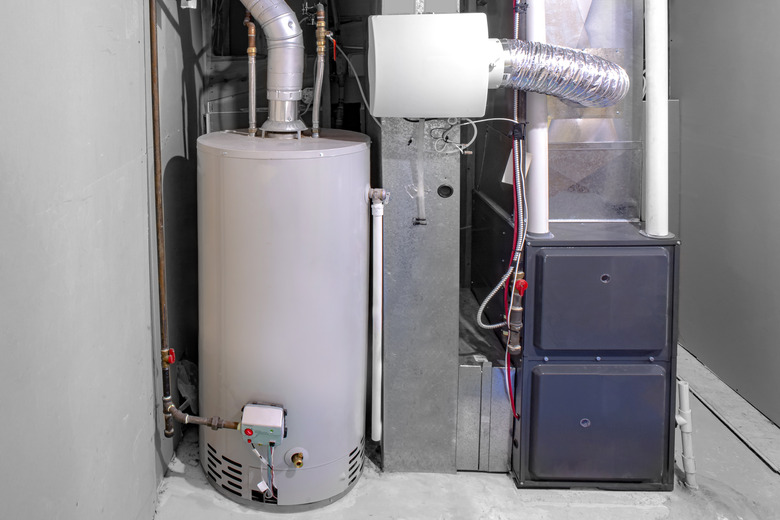What Is Causing My Furnace To Produce Condensation?
We may receive a commission on purchases made from links.
Condensation happens when water vapor in the air precipitates out because of a drop in temperature. You see it on windows in the winter and on the shower door when the air in the shower is hot and steamy. The window glass and the shower door are cooler than the air around them, so moisture precipitates out and forms condensation on the glass.
This explains why you might find condensation on your furnace ducts: The air inside the ducts is warm while the air outside is cold, so moisture can condense on the inside walls of the ducts, and if it happens for long enough, mold will probably grow. Even though condensation isn't something you expect to find around the furnace itself, it can also form there, but it depends on what kind of furnace you have.
Furnace Condensation and High-Efficiency Furnaces
Furnace Condensation and High-Efficiency Furnaces
A high-efficiency furnace is one with a secondary heat exchanger designed to extract the maximum amount of heat from the natural gas or propane being burned. When the burner is on, combustion gases collect in the primary heat exchanger, and if the furnace was a standard one, they would be vented outside. However, a high-efficiency furnace routes these gases into a secondary chamber where they cool down, and the heat they contain is circulated by the furnace blower.
When all the heat is extracted from the combustion gases, they condense to a liquid, and since water vapor (surprisingly enough) is one of the main byproducts of combustion, the condensate is mostly water. It's very acidic water because other combustion byproducts are mixed in with it, but it's still water. This type of furnace has a drain line to direct this condensate outside.
Identifying a High-Efficiency Furnace
Identifying a High-Efficiency Furnace
You may have just moved into your house and aren't familiar with the HVAC system. If so, there are two ways to tell that your furnace is a high-efficiency furnace, also known as a condensing furnace. The first is to look at the efficiency rating on the label, which is identified by the letters AFUE (annual fuel utilization efficiency). If the AFUE is 90 percent or more, it's a high-efficiency furnace. Standard furnaces have an AFUE around 80 percent.
The other way to tell if you have a high-efficiency furnace is to look at the vent pipe. Standard furnaces have metal vent pipes, but the vent pipe for a high-efficiency model is PVC for two reasons. The first is that the gases it exhausts are cool, and the second is that they are acidic and would corrode a metal vent. If you see either of these indications of a high-efficiency furnace, furnace condensation is normal, but it shouldn't be collecting on the floor around the furnace.
What to Do About Furnace Condensation
What to Do About Furnace Condensation
If you have a high-efficiency furnace and water is collecting on the floor around it, it's probably because the condensate drain line is blocked. In most cases, the drain line passes through the wall to the side of the house, and the blockage is often near the inlet or the outlet and can easily be removed by hand. If not, attach the hose of a wet/dry vacuum to the outlet using duct tape to make it watertight and suck out the blockage with the vacuum.
If you don't have a high-efficiency furnace and you see condensate on the floor around it, the water shouldn't be coming from the furnace. Perhaps your HVAC system includes a humidifier and the ducts are leaking. If you can't pinpoint the cause, it's best to call for professional HVAC service because the condensation could signify a major problem with the furnace, such as a cracked heat exchanger.
